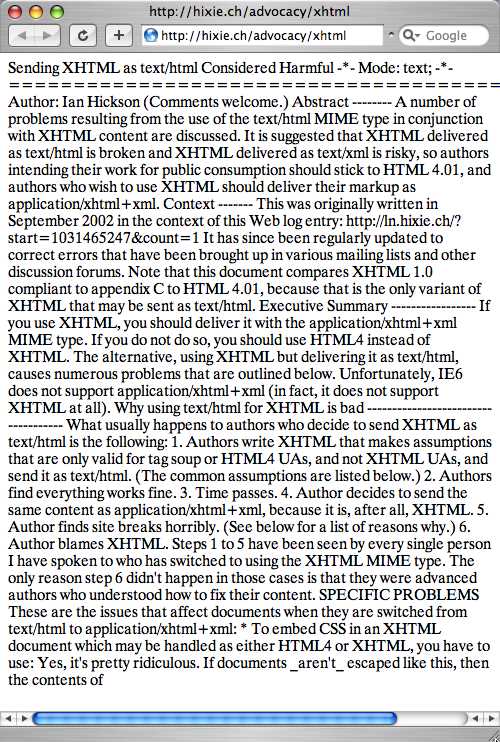Some people browse collections. I collect browsers. Mostly I just want to see what they’ll do to my web site, but I have a positively ridiculous number of web browsers installed on my Linux and Windows computers at work and at home, and I’ve installed a half-dozen extra browsers on our PowerBook.
One project I’ve worked on since my days at UCI was a script to identify a web browser. In theory this should be simple, since every browser sends its name along when it requests a page. In practice, it’s not, because there’s no standard way to describe that identity.
Actually, that’s not quite true. There is a standard (described in the specs for HTTP 1.0 and 1.1: RFC 1945 and RFC 2068), but for reasons I’ll get into later, it’s not adequate for more than the basics, and even those have been subverted. That standard says a browser (or, in the broader sense, a “user agent,” since search robots, downloaders, news readers, proxies, and other programs might access a site) should identify itself in the following format:
- Name/version more-details
Additional details often include the operating system or platform the browser is running on, and sometimes the language.
Now here are some examples of what browsers call themselves: Continue reading →
